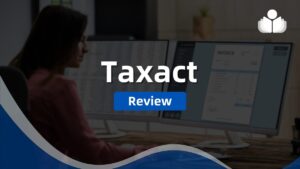“Core” Sequence of Planning
Information
(includes a typical outline of planning document)
© Copyright Carter McNamara, MBA, PhD, Authenticity Consulting, LLC.
Adapted from the Field Guide to Nonprofit Strategic Planning and Facilitation and
Field Guide to Nonprofit Program Design, Marketing, and Evaluation.
One of the major functions of management is planning. There
are numerous types of plans, for example, business plans, strategic
plans, project plans, program plans — and on and on and on. (The
library topic “Planning” describes many of these types
of plans in business and management.) Most planning processes
typically use the same “core” sequence of planning activities.
The complexity and duplication of this “core” sequence
depends very much on the nature and needs of the organization.
Basic Sequence of Planning Information
Sequence in a Large Organization
Sequence in a Small Organization
Typical Outline of Planning Document
Also consider
Related Library Topics
“Core”
A sequence of Planning Information
At the core of most planning processes is the same
the basic sequence of planning information, including:
- What goals are to be achieved (Goals are usually major accomplishments,
results, outcomes, or “end states” to be achieved.
It’s ideal if goals can be worded such that it’s obvious whether
they’ve been reached or not.) - Who’s responsible to reach the goal
- How they will reach the goal (that is, what strategies, or
methods, they will use) - When they will reach the goal
The complexity of the sequence depends very much on the nature
and needs of the organization.
Sequence for
a Large Organization
The strategic planning document for a large, multi-national
organization can be many pages long, with numerous overall goals,
associated strategies/methods to reach the goals, associated objectives/milestones
along the way while implementing the methods, and listings of
who’s responsible to achieve each objective and by when.
In the various divisions in that large company, the above sequence
might be repeated again, but on a somewhat smaller scale. In departments
in the division, the above sequence might be repeated again, but
on a somewhat smaller scale, etc.
The following sequence might be typical to each of the top levels
of this type of large organization.
- Each overall goal that should have been reached when the plan
is implemented (for levels other than the very top level of the
organization, each overall goal is usually directly associated
with overall goals of the next-higher-up level of the organization) - Who is primarily responsible to reach each overall goal
- Overall methods/strategies to be used to reach each overall goal
- Who is primarily responsible to implement each method/strategy
- Specific objectives/milestones to be achieved along the way to
each overall goal - Who is primarily responsible to achieve each objective
- Specific methods/tactics to be used to achieve each objective
- Who is primarily responsible to implement each method/tactic
- For each objective, a date when the objective should be reached
- For each objective, a section to provide the status on the progress
toward reaching that objective - For each objective, a section to provide comments about status.
Sequence in
a Small Organization
A small organization might use the following sequence.
- Each overall goal that should have been reached when the plan
is implemented - Who is primarily responsible to reach each overall goal
- Overall methods/strategies to be used to reach each overall
goal - Specific objectives/milestones to be achieved along the way to
each overall goal - For each objective, a date when the objective should be reached
- For each objective, a section to provide the status of the progress
toward reaching that objective - For each objective, a section to provide comments about status.
Typical Outline
of Planning Document
Executive Summary
- One- to two-page section that highlights important points
from the plan (this summary is not a listing of the plan’s
contents — that’s a Table of Contents) - Purpose of the plan
- Results the plan is intended to achieve when completed
- Who has the primary responsibility for ensuring the plan is completed
- Key roles of others in the organization, for example, for
authorization, reviews, etc. - When the plan will be started and completed
- This might include who has copies of the plan
- Might include who can be contacted with questions, etc.
- Might include descriptions of who was involved in the planning
and what planning process was used - Might include very brief wording about the structure of
plan and how to use it
Table of Contents
Introduction
- This section usually includes more information about key
topics that were included in the Executive Summary, including
who has primary responsibility for the implementation of the plan,
when the plan will start and stop, who can be contacted for information
about the plan, how to use the plan, etc.
Description of the Organization (description of the larger
context of the plan)
- The overall mission of the organization, or description of major
function that this plan contributes to
Goals, Objectives, Responsibilities, and Timelines
- (As noted above, the extent of this section depends on the
nature and needs of the organization. This section is often the best
depicted in the form of a table.)
Procedure to Monitor Implementation of the Plan
- Description of when the plan will be reviewed
- Who will review the plan
- Description of what will be considered during the review of the
plan
Appendices
- Description of the planning process that was used
- Listing of who was involved
- Any supplemental information, such as budgets, etc.
- Authorization lists of who can have copies of the plan and
who has copies now, etc? - Recommendations to improve the planning process in the future
For the Category of Planning and Project Management:
To round out your knowledge of this Library topic, you may want to review some related topics, available from the link below. Each of the related topics includes free, online resources.
Also, scan the Recommended Books listed below. They have been selected for their relevance and highly practical nature.
 Sections of this topic
Sections of this topic
















